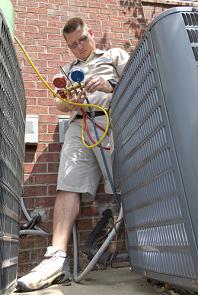
About 80 percent of the air conditioners in the United States rely on the refrigerant, which the EPA is gradually phasing out until 2020. After this time, R-22 will no longer be produced at all.
Although the EPA says R-22 will be readily available over the next 10 years, the phase-out already has resulted in large price increases in some regions of the country, depending on supply and demand for the product.
Higher prices and uncertain availability are undoubtedly the cause of the doom-and-gloom pessimism, but homeowners would do well to take the long view on two fronts.
For one, R-22 can contribute to ozone depletion. Worse, it is a greenhouse gas whose manufacture results in a byproduct that contributes to global warming. By contrast, the new replacement Freon mix, called R-422, poses no such threats.
Second, homeowners who will be forced to replace their A/C units will have the opportunity to purchase a new, more efficient Energy Star unit. Some of these A/C units operate at 95 percent efficiency -- an achievement unheard of when the same homeowners purchased their existing A/C unit.
While it's true that the purchase of a new A/C represents a major investment, it's one that will pay dividends; the EPA estimates that Energy Star A/C units can easily save homeowners between 10 and 40 percent on their cooling bills. And if homeowners adjust their thermostat by even one degree, they can save about 4 percent more every month.
Let the indoor professionals at Rodenhiser Plumbing, Heating & Air Conditioning study your home's cooling load, or the amount of cool air your home needs to maintain a comfortable temperature. Then we'll recommend an A/C unit of an appropriate size so that, in the short-term as well as the long-term, the switch to an R-22-free A/C really will be good for you and good for the environment.
Our goal is to help educate our customers about energy and home comfort issues (specific to HVAC systems). For more information about air conditioners and other HVAC topics, download our free Home Comfort Solutions Guide.
Air conditioner image via Shutterstock